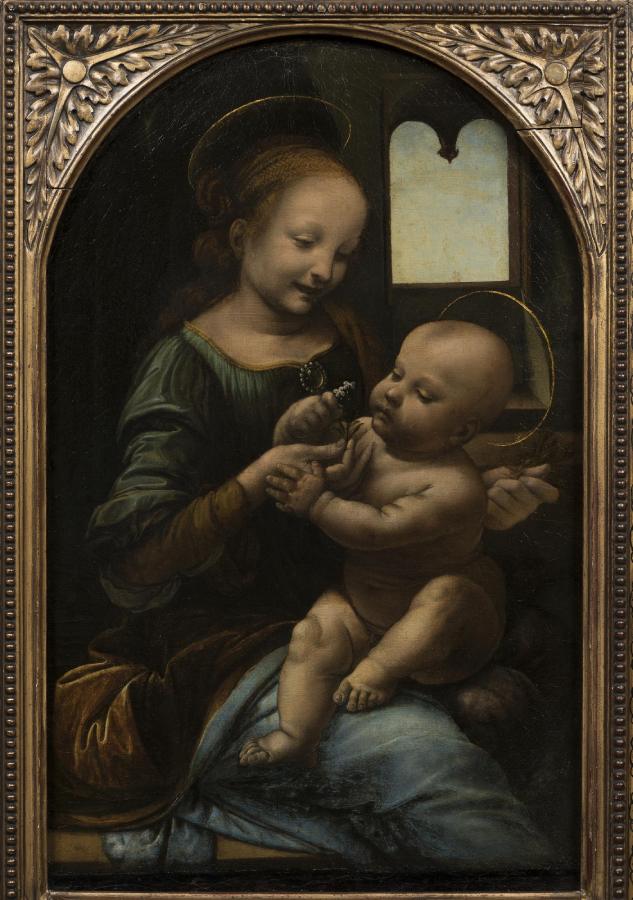Leonardo da Vinci (1452-1519)
Madonna Benois
1478–1480
Oil on canvas transferred from panel, 49.5 x 33 cm
Hermitage Museum, St Petersburg
One of the greatest geniuses of the Renaissance era, Leonardo da Vinci combined the talents of artist and scientist, inventor and thinker. Only around a dozen of his original paintings have survived down to the present day. The two pictures in the Hermitage collection are a particular pride of the museum. The Benois Madonna is an early work by the artist. For its time this was a truly cutting-edge piece. If it were not for the golden halos, the painting might pass for a genre scene of a young Italian woman playing with her son. Mary’s clothing and hairstyle follow Florentine fashion of the late 15th century. Painted from a specific model, her facial features are far from ideal. She is showing the child a flower and he is reaching out for the unfamiliar object, clumsily trying to grasp it while holding on to his mother’s hand with his own small one to prevent her taking this new plaything away. Mary seems not to suspect that the flower – a bitter cress with petals arranged in the form of a cross – is a symbol of the coming Crucifixion. The emphatically physical, corporeal nature of the personages, the naturalness of their poses and gestures, and the tangible quality of the medium of light and air – everything here produces an illusion of life. Leonardo was first among the Italian artists make illumination in a painting specific. One of the sources of light here is the small window in the wall; the other is located outside the picture space – in front and to the left. Between them they generate a complex play of light and shade in the scene that involves the figures as well. Leonardo’s painting obtained its present name, the Benois Madonna, from that of its last owner, the wife of the court architect Leonty Benois. In 1914 this masterpiece was acquired for the Hermitage. (SHM)

